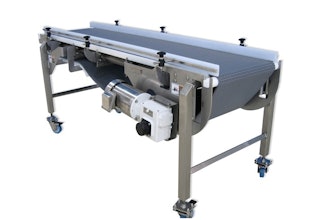
 Tim Möhnkè
Tim Möhnkè It’s no secret that today’s customers are savvy. They are interacting with brands at various points in time, and doing competitive research online. Convenience and cost are paramount when it comes to the decision making involved in the purchase of a service part.
The most innovative manufacturers realize the role the customer plays in service parts pricing. In an industry where the slightest differentiations set apart one brand from the next, manufacturers must evolve and adopt pricing best practices to meet these expectations.
Additionally, with the manufacturing of durable goods declining since the fourth quarter of 2015, manufacturers around the world are placing more emphasis on service parts pricing as a form of competitive differentiation and source of revenue. Post-sales service is an area of opportunity in a contracting market — with upwards of 25 percent of manufacturing companies’ total revenues and 50 percent of their operating margins coming from this part of business!
Below, I outline three ways you can move away from pricing of the past and start positively impacting both the customer experience and revenue:
No. 1 - Goodbye spreadsheets, hello automation. Are you still living in the world of Excel for service parts pricing, spending hours querying and formatting data from various systems to tactically review prices, but have very little time to view pricing strategically? Even though you may be getting prices out the door, you are leaving money on the table. It’s time to say goodbye to those spreadsheets and welcome a more sophisticated solution that will allow you to price parts more efficiently and effectively.
With a cloud-based pricing solution that integrates into your company’s ERP, you are able to have a more strategic focus, better leverage multiple data sources, standardize processes and identify potential areas of revenue uplift. In the world of spreadsheets, manual processes create multiple challenges with scalability, data integrations and visibility.
No. 2 - Equal parts science and art. Oftentimes, stakeholders within an organization associate “price optimization” with a mathematical algorithm. While this is absolutely a key component of pricing, there is also an element of art. Pricing can be akin to online dating — an algorithm considers a user’s likes, dislikes, geography, age, etc. to “match” users with potential partners, but due to human nature, there are too many moving variables to completely rely on an algorithm alone.
Because of this human element to pricing, practitioners should be able to interact with every variable of the price optimization process — combining science with art — to determine the price displayed in-market.
No. 3 - Gain executive buy-in. If everything mentioned above sounds like something you’d like to move forward with, but you feel executives may be hesitant, you aren’t alone. Oftentimes, company leaders are extremely focused on other initiatives, and pay less attention to the pricing of service parts.
Many technology providers offer resources to encourage and convince executives that undergoing a pricing project and seeking a software solution are the right next steps. These often include gap analyses, a roadmap to pricing excellence and demonstrations of business value (ROI). Once an executive sees how service parts revenues and gross margins can improve — increases of more than four percent and several hundred basis points, respectively — they will have a hard time saying “no.”
When undertaking a new pricing project, it’s important to remember that pricing is a process, and the purpose is to maximize price differentiation for maximum profitability, while maintaining customer price satisfaction. With these goals at the forefront, you’re sure to make an impact on your company’s bottom line — and your career.
Tim Möhnkè is Director of Pricing Solutions at Syncron.





















